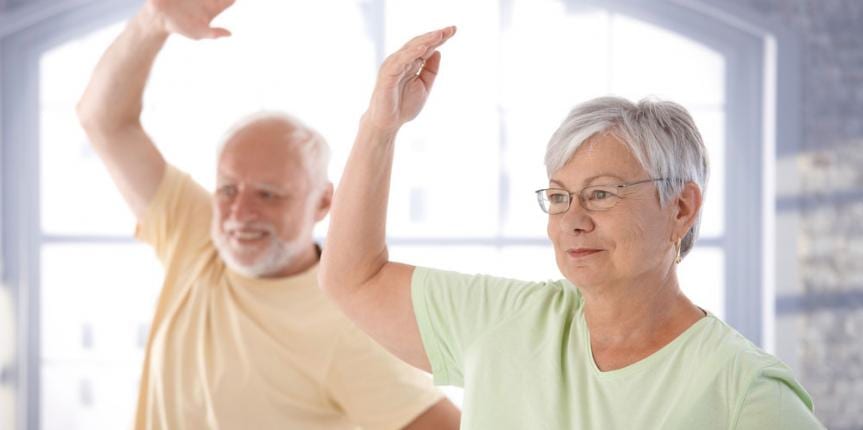Good balance for seniors is pivotal. I know it may sound like an exaggeration, but seniors can injure or in worse scenarios die from falling. For older adults that are frail or have poor bone density, breaking a hip is often the result of that fall. So how do seniors maintain or improve their balance when for many of them it gets progressively worse? Below are 5 activities that seniors can do to improve their balance as they age.
Practice Balance Exercises – it may sound self explanatory but to get better at balancing you have to practice it. Firstly seniors have to view getting better at balancing as a progressive activity. Instead of just trying to stand on one leg, which is hard to start at; seniors should focus on balancing with the feet together and then in a staggered stance before trying to stand on one leg. Using chairs or the walls at home are great tools while practicing balancing exercises.
Pay attention to senses – eyes, ears and touch play a major role in an individual’s ability to stay upright. For the eyes, seniors should have regular eye tests to make sure that they see well since the eyes are the first sense the body uses to keep balance. The ears are best aided when seniors practice balance with their eyes closed. When it comes to a person’s touch in their feet, it is often recommended that bare foot balance training allows the little muscles in the feet to work which strengthens their balancing ability.
Get strong – weak muscles often result in having poor balance. The muscles around the hips and in particular the quadriceps, gluteus, adductor and abductor muscles are important to strengthen for seniors who want good balance. Resistance training or weight bearing activities like walking stairs or lifting weights are great choices to increase strength for seniors. Also for those who have poor density, participating in activities that are weight bearing are great for bone health.
Watch posture– having good posture always makes it easier to maintain good balance. For seniors who have hunched shoulders or poor posture, their bodies have to work harder to stay upright. The best recommendations for seniors that have poor posture are to focus on sitting/standing upright, strengthen the muscles between the shoulder blades and stretching chest muscles.
Check medication – People who take 4 or more prescribed medications are at an increased risk of having balancing issues. Seniors should regularly check with their doctors if the medications they use are needed and if the dosages are correct.
About the Author: Eric Daw is an active aging specialist and the owner of Omni Fitt. Omni Fitt is dedicated to the wellbeing, health and quality of life of people aged 65 and over. Eric motivates and empowers the older adult population to take responsibility for their independence, health and fitness through motivating and positive coaching experiences.








